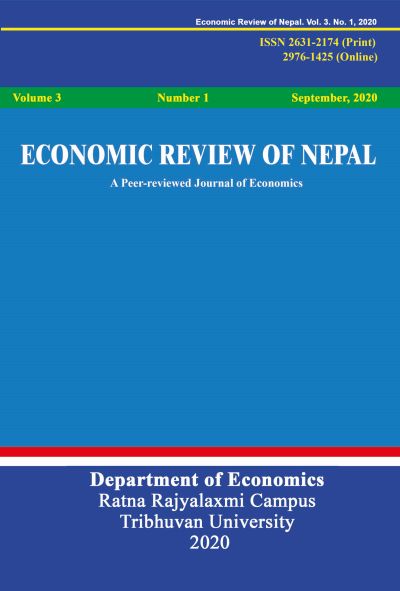Trends and Structures of Remittance and its Impact on Inflation in Nepali Economy
DOI:
https://doi.org/10.3126/ern.v3i1.61745Keywords:
remittance inflow, inflation, gross domestic product, foreign exchange, consumptionAbstract
The purpose of this study is to explore remittance inflow trends and structures, as well as their influence on inflation in the Nepali economy. This study was mainly based on secondary data published by the Nepal Rasta Bank annual report and an Economic survey published by the Ministry of Finance, Nepal, for the fiscal year 2000/01 to 2019/20. The data were analyzed, using descriptive statistics and correlation. During the study period, the remittance inflow in Nepal showed an increasing trend. The remittance to Gross Domestic Product ratio stood at around 25.42% in fiscal year 2017/18. Remittance showed a strong positive association with the national gross domestic product (r = 0.9867) and a positive but low association (r = 0.492) with inflation. In the short run, growing remittance inflows benefit the economy by increasing household consumption and lowering poverty, but in the long run, they may contribute to economic decline. Therefore, the government must develop strategies, policies, and programs to stimulate long-term investment in productive sectors through remittances to support long-run economic growth and sustainable development of our country.
Downloads
Downloads
Published
How to Cite
Issue
Section
License
This license enables reusers to distribute, remix, adapt, and build upon the material in any medium or format for noncommercial purposes only, and only so long as attribution is given to the creator.




